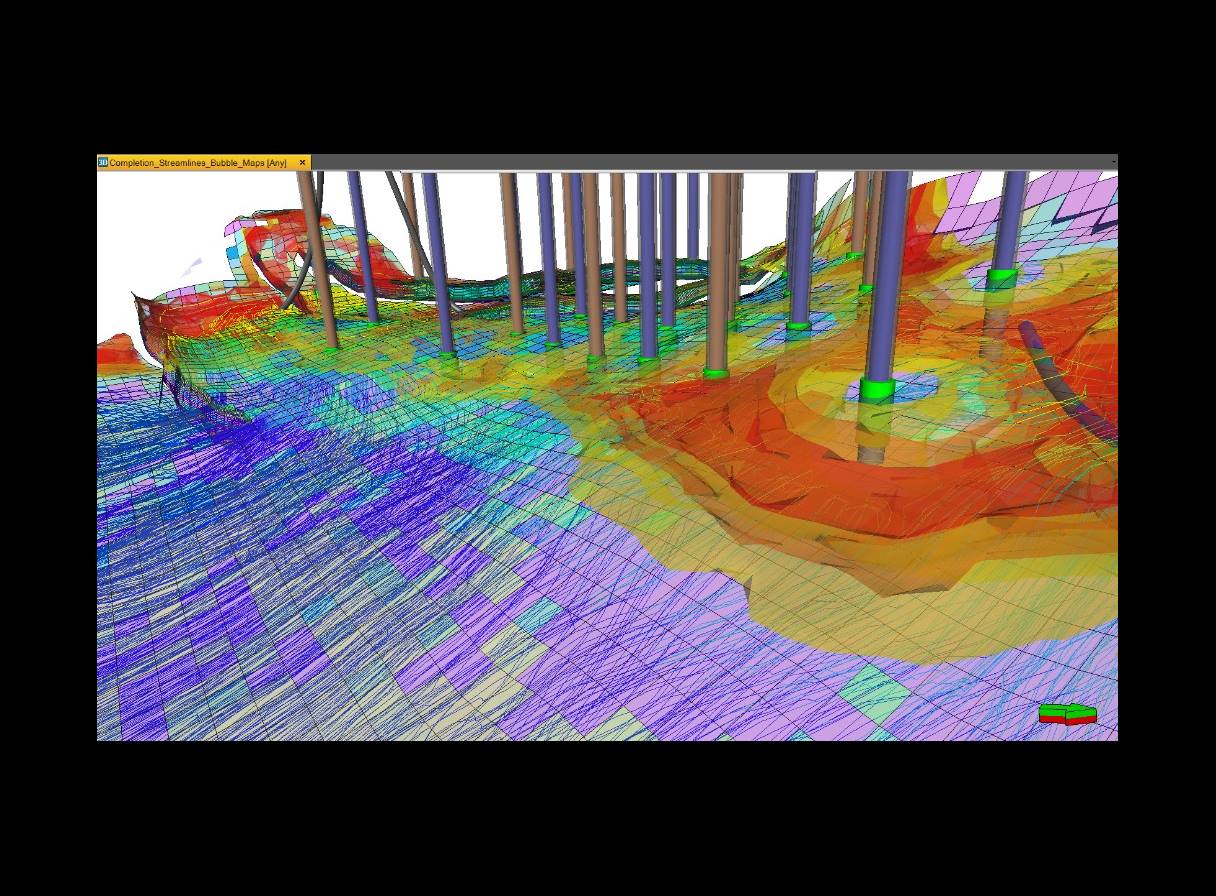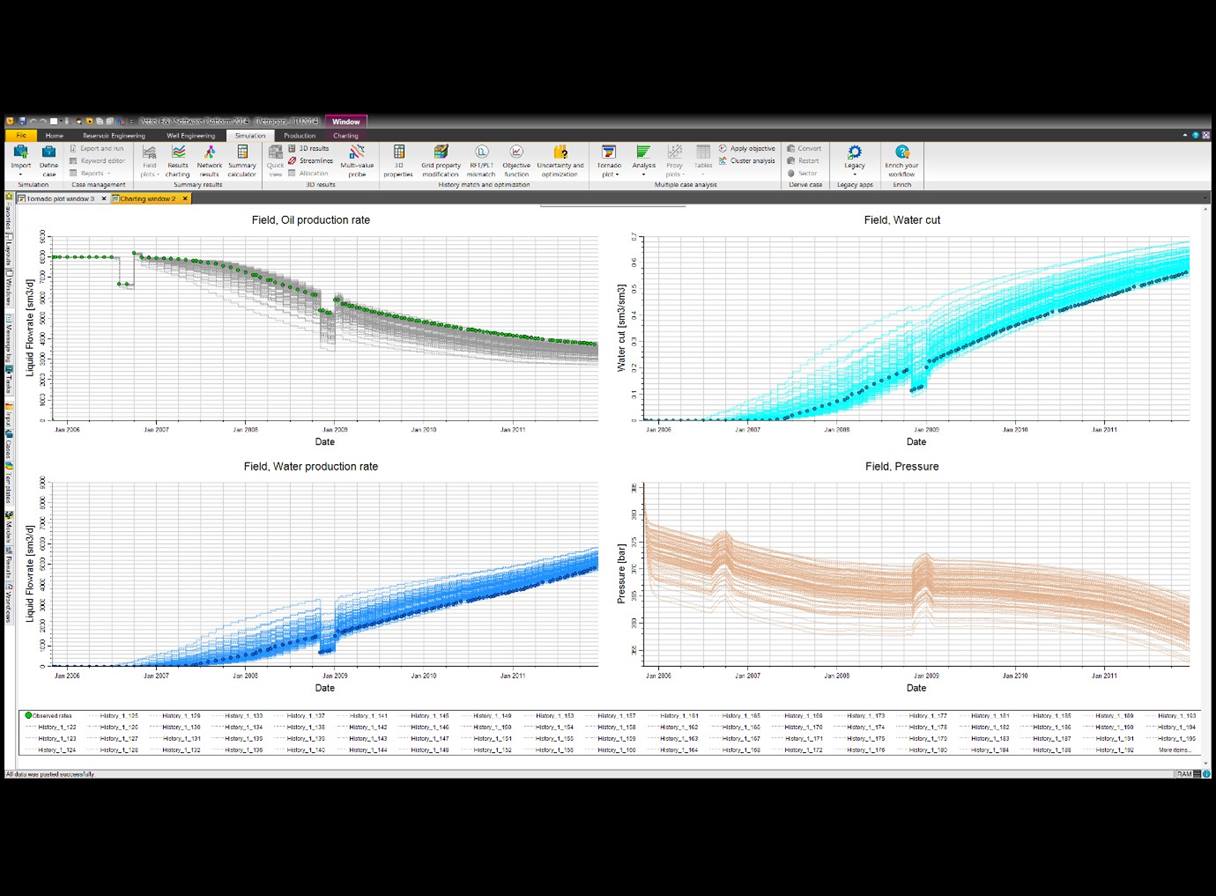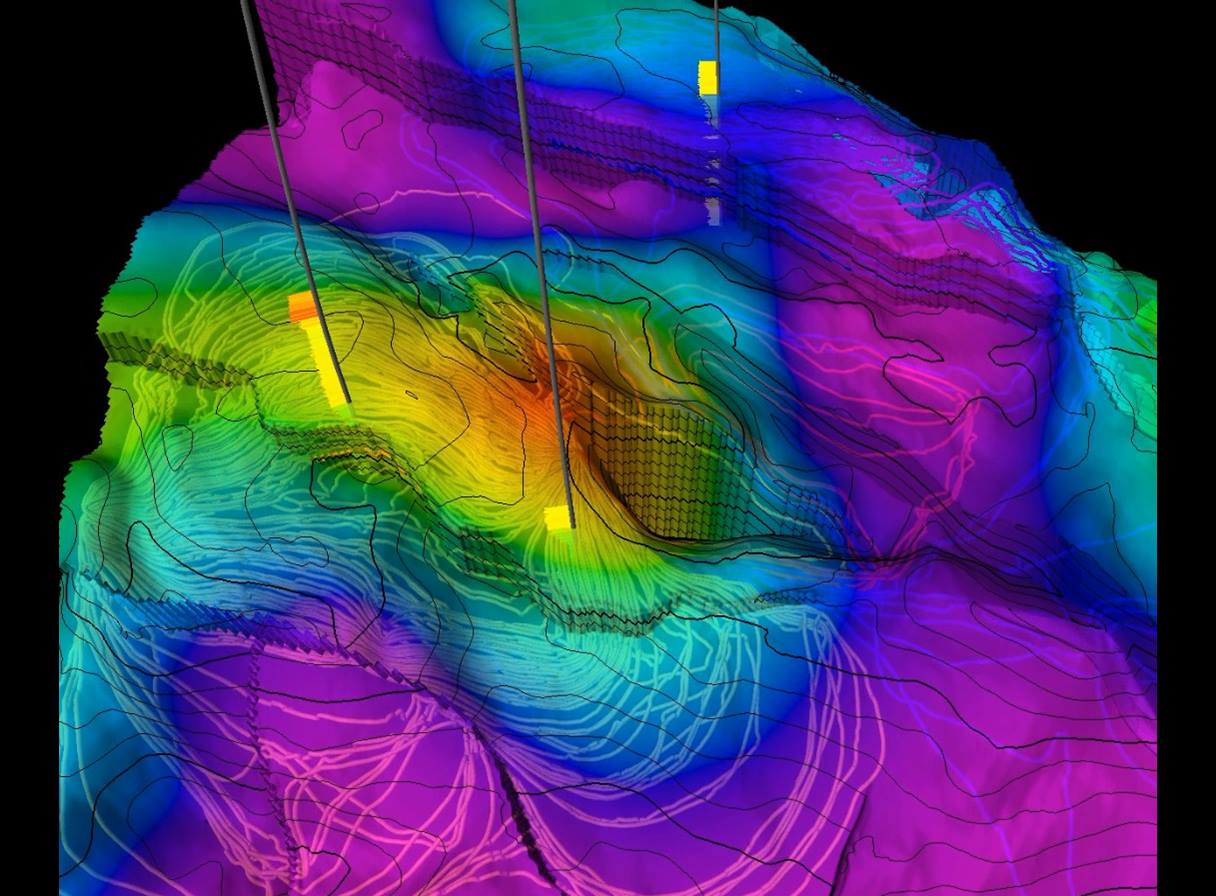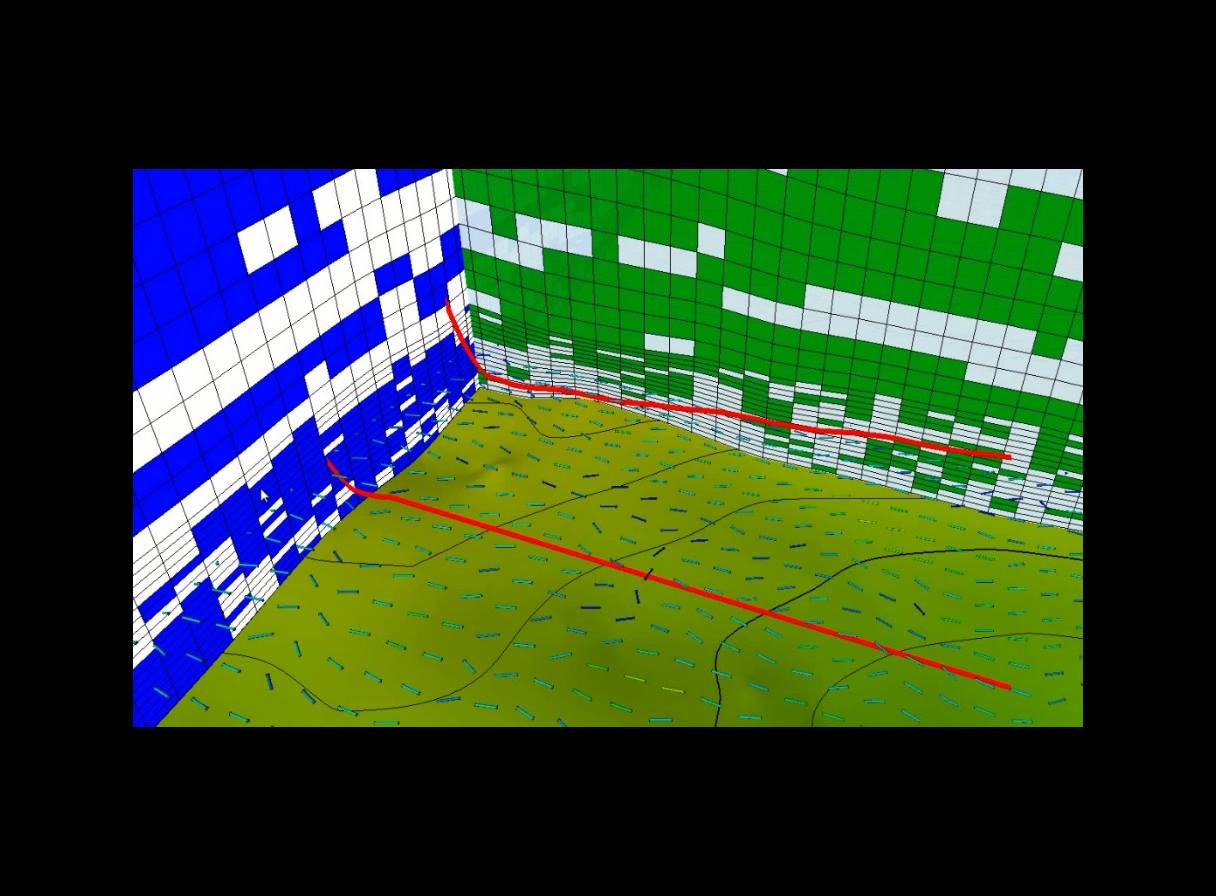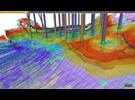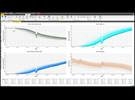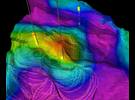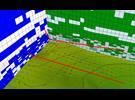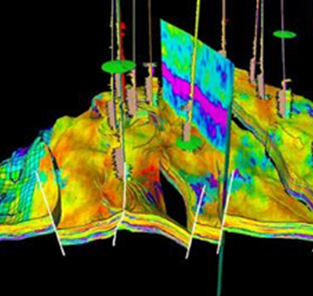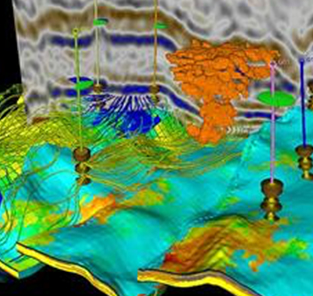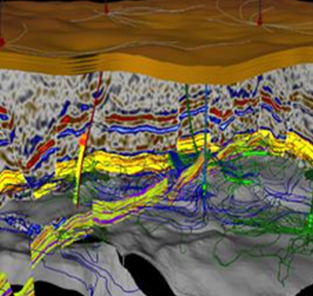The power of reservoir modeling is predictive strength. This is only reached after rigid screening across the various parameters that affect fluid flow through porous media ranging from data reliability, to geostatistical property distributions, to combinations of physical effects occurring between the fluids, reservoir rock, and well infrastructure.
Enhanced production forecasts
Reservoir engineering focuses on calibrating the reservoir understanding with the production history that is observed across a field, also known as history matching. With a calibrated reservoir model, there is greater predictive strength to forecast how production will continue, thus indicating more efficient recovery schemes for future development.
The History Matching & Production Forecasting module offers a variety of tools inside Petrel to connect the production data and derived interpretations to reservoir engineering and simulation workflows. These tools are used to connect production rates and pressures into Petrel subsurface software to be used as history-match controls or focal points for mismatch repair.
Visualize historic production
This module provides unique ways to visualize and utilize historic production including preemptive cross-plotting and data segregation by completion type, as well as intuitive objective function definition to harness optimizers in the Petrel platform to search for history match possibilities. This varied offering supplies the reservoir engineer with an elaborate environment to perform the often cumbersome task of synchronizing the static geomodel with the dynamically observed fluid rates at surface.
